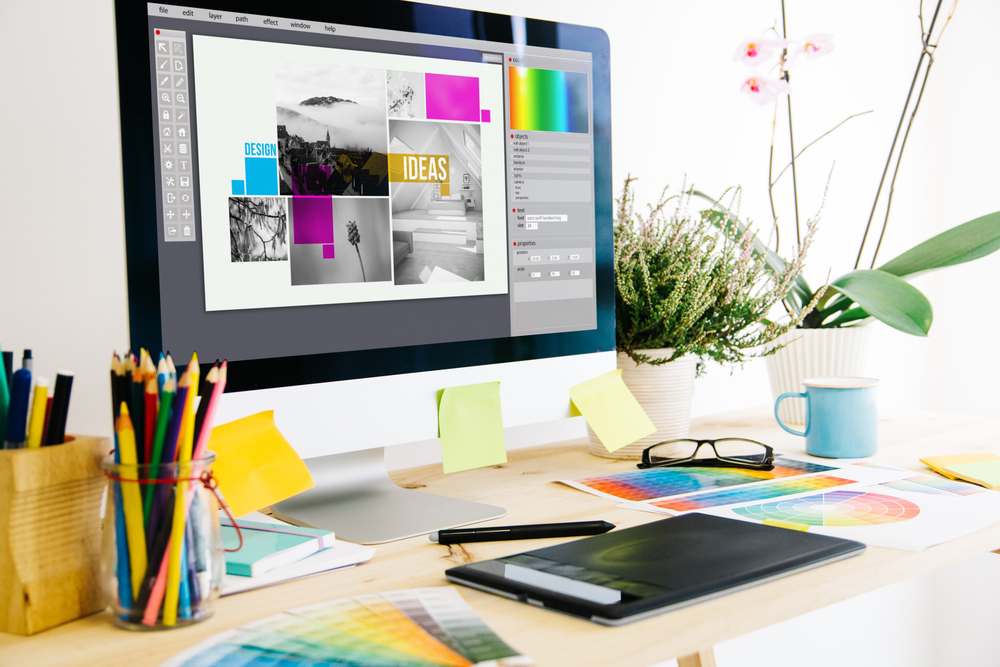How to make a good design portfolio?
In our latest post, our Head of Creative at Castle, Pete Richardson will be providing his thoughts on how to make a good design portfolio.
A design portfolio is an essential tool for every designer out there. It allows you to demonstrate your best work in fresh and creative ways. If you’re new to graphic design you may be wondering how to make a good design portfolio. Below I provide my thoughts and opinions.
What is a design portfolio?
A design portfolio is a body of work that represents your work as a designer. A design portfolio should be used to showcase your best work that you can share to potential employers, clients or anyone who is interested.
It’s as much about showing your design approach, processes and results, as it is about your designs as a whole.

Is a design portfolio a CV for designers?
Generally, it is good practice to have a CV as well as a design portfolio. Personally, when I am looking for potential recruits for Castle, I tend to look at the portfolio first then follow it up by looking at the CV. The reason I do this is if you’re recruiting for a designer position – naturally, you’re going to gravitate towards the design portfolio first as you want to see the various bodies of work that’s used as an example.
But is a design portfolio a CV? A design portfolio should be seen as a companion piece to your CV. Your design portfolio allows employers and clients to see what software you have worked on, anything in the Adobe suite for example. You also get an idea of what that particular person’s skillsets are through reviewing the portfolio.
Your design portfolio demonstrates the various bodies of work alongside your CV which highlights your skills and what software you are competent with. This is what makes your portfolio a good companion piece to your CV and I would say this is the key to a good design portfolio.

What goes into a design portfolio?
Regarding what goes into a design portfolio, personally, I recommend keeping your design portfolio shorter rather than longer. A good number to strive for is to have three to four really detailed bodies of work that you can showcase.
As for what goes into a design portfolio? I would focus on the different aspects of design. The examples I’d choose are a layout project to showcase the foundations, a branding piece and a typographical piece. Doing this will allow you to show a range of different skills whilst making sure it isn’t too long.
You want to be able to tell a narrative with each project you decide to have in the portfolio. You don’t want to have multiple logos that are completely unrelated to each other and expect that to do well. You want the person reviewing your design portfolio to have an understanding as to why you made those particular choices when it comes to the designs. Ultimately guiding the reader through a visual branding journey.

How can you present a design portfolio?
Presenting a design portfolio is the easiest part as it ultimately represents everything. It’s digital, it’s print – design portfolios represent every aspect of design. A suggestion when it comes to presenting your design portfolio is for you to have a website.
Having a website will allow you to create three-four pages for your portfolio. You can separate each project on each individual page. Doing this will allow you to build a strong narrative for your portfolio. Once you are happy with your design, you can then go to places such as Behance and Dribble.
Behance is a free networking website that allows various creatives to share their work for others to discover. Behance is a part of the Adobe Creative Cloud, providing a focus on graphic design, illustration, fashion, advertising, photography and many others.
Dribble is a similar networking tool that allows you to engage with designers and creatives. Dribble has more of a focus on the graphic design aspect as it also posts jobs on the platform. The main difference between Behance and Dribble is that you need to be invited by someone to post your content on Dribble.
Another great tool to present your design portfolio is social media. With social media, you can create various professional pages that centre around your body of work – take Instagram for example. With Instagram being primarily used as a visual social media platform, this allows you to get creative and have a portfolio-based Instagram to demonstrate your work.
You will also need a traditional printed portfolio to take something tangible into an interview.

How to make a good design portfolio?
Making sure your design portfolio is presented one project at a time is the key to figuring out how to make a good design portfolio. You need to make sure you keep it as short as you can, whilst structuring it so that everything you have done within a project is in the same section. Poor examples that I have seen in the past are the more abstract portfolios with no real story or explanation.
The hardest part of any design portfolio is having people look at them. The best example that I have seen regarding enticing someone to look at their design portfolio was I got sent a golden ticket from Charlie and the Chocolate Factory. This was printed exactly like the golden ticket. Although instead, it had the name of the person who sent me it along with a message that said “You have been chosen to look at my portfolio”.
Due to how bold and out there it was, it was brilliant. You see the creativity in the golden ticket idea and think ‘right, I need to see this person’s portfolio’.

How would you present a design portfolio?
Ultimately, I believe it comes down to organisation. Make sure you’re telling a tangible story with each project. Being very clear and concise without overcomplicating things is also really important.
That’s everything regarding how to make a good design portfolio. If you have any questions, please feel free to get in touch and let us know your previous experiences with design portfolios.
